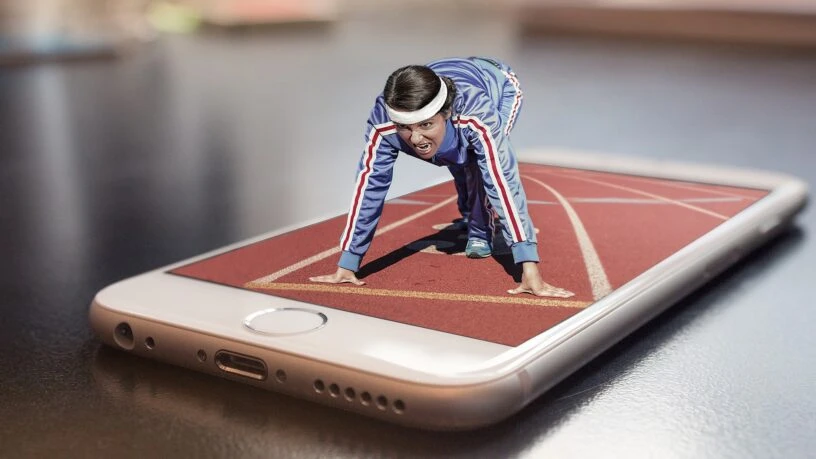The Role of Technology in Modern Sports Training
Technology has transformed modern sports training, enabling athletes to optimize their performance through data-driven insights, personalized feedback, and advanced simulations. From wearable devices that monitor biometrics to artificial intelligence (AI) systems that analyze performance metrics, today’s athletes have access to tools that provide detailed evaluations and actionable recommendations. These advancements help improve technique, enhance decision-making, and reduce injury risks. Technologies such as virtual reality (VR) and motion-capture systems also allow athletes to practice complex movements in a controlled environment, enabling them to refine their skills without physical strain. The integration of technology in sports has created a new era of smart training, where precision and science drive performance improvements.
Wearable Devices
Wearable devices are among the most widely used technologies in modern sports. These tools include fitness trackers, GPS systems, and heart rate monitors that provide real-time feedback on an athlete’s physical condition. For instance, runners can track their pace, heart rate zones, and stride efficiency, while swimmers can monitor stroke count and lap times. Wearable sensors also measure muscle fatigue, oxygen levels, and hydration status, helping coaches design personalized training plans based on an athlete’s physiological data. This ensures that workouts are not only effective but also aligned with recovery needs to prevent overtraining and injury. In team sports, GPS trackers monitor player movements and workload, offering insights into performance patterns and enabling coaches to make tactical decisions during games.
Key Technologies in Sports Training
| Technology | Function | Benefits |
|---|---|---|
| Wearable Devices | Track biometrics (heart rate, steps, calories, etc.) | Real-time performance monitoring and injury prevention |
| Virtual Reality (VR) | Simulate competitive scenarios and practice decision-making | Enhances mental training, reduces physical stress |
| AI Coaching Tools | Analyze performance data and provide feedback | Personalized recommendations and real-time adjustments |
| Motion-Capture Systems | Record body movements and assess biomechanics | Improves technique and reduces injury risk |
| Force Plates | Measure balance, stability, and impact forces | Detects imbalances and refines movement patterns |
| Smart Equipment | Embedded sensors in equipment (shoes, bats, gloves) | Tracks movement precision and form for technical improvements |
Virtual reality (VR) is another revolutionary tool in sports training, offering athletes the ability to simulate real-life scenarios without physical exertion. VR systems immerse athletes in highly realistic environments where they can practice strategic plays, visualize complex movements, and make split-second decisions. For example, quarterbacks in football can train to read defenses and anticipate passes, while golfers can practice their swings on virtual courses designed to replicate challenging weather conditions. VR also aids in rehabilitation, allowing injured athletes to stay mentally sharp while recovering from physical setbacks. By replicating competitive situations, VR enhances mental preparation, decision-making speed, and focus, giving athletes an edge in high-pressure environments.
Artificial intelligence (AI) has taken sports analytics to the next level. AI systems process vast amounts of data, identifying patterns and trends that are often invisible to the human eye. For example, AI-powered video analysis tools break down an athlete’s performance frame-by-frame, highlighting inefficiencies in form or technique. These systems also compare performances with past data to predict outcomes, identify weaknesses, and suggest corrections. In addition, AI is used to personalize training programs, adjusting workloads based on individual progress and physical condition. Machine learning algorithms track recovery patterns, ensuring athletes get adequate rest while optimizing performance gains. AI-driven coaching platforms even offer virtual coaching by simulating real-life interactions, enabling athletes to practice without the constant presence of a coach.
Top Benefits of Technology in Sports Training
- Real-Time Feedback – Provides instant data on performance, helping athletes make adjustments during training.
- Injury Prevention – Monitors physical strain, fatigue, and imbalances to reduce the risk of injuries.
- Data-Driven Decisions – Analyzes large datasets to develop personalized training programs.
- Mental Preparation – Simulates competitive scenarios using VR to enhance decision-making under pressure.
- Performance Optimization – Tracks detailed biometrics, ensuring training intensity aligns with recovery needs.
- Skill Development – Uses motion-capture systems and AI tools to refine technique and form.
- Remote Coaching – Provides virtual coaching sessions and AI feedback for flexible training schedules.
- Rehabilitation Support – Allows injured athletes to practice mentally and track recovery progress.
Smart equipment has also emerged as a critical component of modern sports training. Shoes with pressure sensors measure footstrike patterns to optimize running techniques, while smart balls in soccer and basketball track spin rates, speed, and trajectory. These tools provide athletes with feedback on their performance and help refine technical skills with precision. Additionally, recovery technologies like cryotherapy chambers, compression garments, and electronic muscle stimulators accelerate recovery times and reduce muscle soreness, enabling athletes to train harder without risking overuse injuries.
The integration of technology in sports training has redefined how athletes prepare, perform, and recover. From wearable devices that track biometrics to AI-driven analytics and virtual reality simulations, these advancements offer athletes the tools they need to maximize performance while minimizing risks. The ability to measure and analyze every movement, muscle activation, and mental response ensures that training programs are data-driven and highly personalized. As technology continues to evolve, the future of sports training promises even greater precision, efficiency, and innovation, pushing athletes to achieve new levels of excellence.




